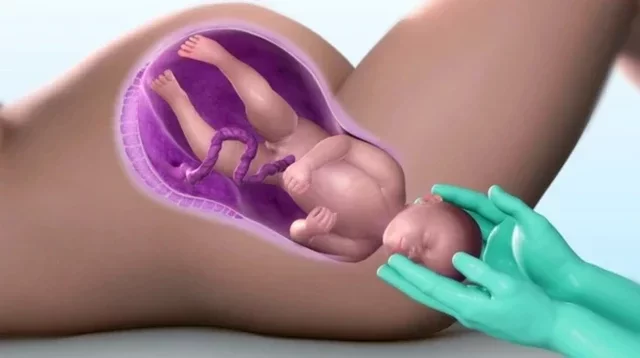The female body is a complex biological system that undergoes numerous changes. Among these changes are variations in the size and shape of the vàgina. While slight changes are normal and usually do not cause any concerns, there are instances when the vàgina expands beyond standard dimensions. In this article which is in accordance to medicalnewstoday, we will explore various factors that can cause the vàgina to expand more than usual and discuss the potential implications it may have on a woman's health and quality of life.

Understanding the Vàgina and its Normal Dimensions
Before delving into the factors that can lead to an expanded vàgina, it is essential to understand what is considered normal. The vàgina is a muscular canal that connects the uterus to the external opening of the vulva. Its usual dimensions in a healthy non-aroused state range from approximately 3-4 inches in length, with a width of about 1-1.5 inches. However, these measurements can vary depending on factors such as age, sèxual activity, childbirth, and individual genetics.
Factors Contributing to Vàginal Expansion
1. Age and Hormonal Changes:
As women age, they experience natural hormonal fluctuations that can affect the elasticity and thickness of vàginal tissues. Decreases in estrogen levels during menopause can lead to vàginal atrophy, a condition characterized by thinning, dryness, and reduced elasticity of the vàginal walls. Consequently, this can cause the vàgina to expand and compromise its ability to maintain structural integrity.
2. Childbirth:
Vàginal delivery is a common factor that can lead to temporary or permanent vàginal expansion. During childbirth, the vàginal muscles naturally stretch to accommodate the passage of the baby. The degree of stretching can vary depending on factors such as the size of the baby, the duration of labor, and the number of previous births. In some instances, the stretching may lead to tearing or episiotomy, resulting in further tissue stretching and potential long-term expansion.
3. Pelvic Organ Prolapse:
Pelvic organ prolapse occurs when the muscles and ligaments that support the pelvic organs weaken, causing them to descend into the vàginal canal. This condition can contribute to noticeable vàginal expansion, as the organs will push against the vàginal walls. Factors such as age, multiple childbirths, obesity, and chronic straining can increase the risk of pelvic organ prolapse.
4. Sèxual practices and trauma:
Engaging in sèxual activities that involve large objects, repetitive rough intercourse, or forceful penetration can lead to vàginal expansion. Traumatic experiences such as sèxual assault or genital mutilation may also cause severe damage to the vàginal tissues, resulting in enlargement.
Implications of Vàginal Expansion
While slight variations in vàginal dimensions are common and often do not cause significant health concerns, excessive, or sudden expansion may have the following implications:
1. Decreased sèxual satisfaction:
Women with an expanded vàgina may experience reduced friction during sèxual intercourse, which can lead to decreased sèxual pleasure for both partners. This can potentially impact a woman's overall sèxual satisfaction and quality of intimate relationships.
2. Urinary and bowel dysfunction:
In cases of significant vàginal expansion, pelvic organ prolapse may occur, resulting in urinary incontinence, urinary frequency, difficulty emptying the bladder, and bowel dysfunction. These symptoms can greatly impact a woman's daily life and overall well-being.
3. Emotional and psychological impact:
The physical manifestations of an expanded vàgina may lead to psychological distress, affecting self-esteem, body image, and overall mental health. Women experiencing these changes may feel embarrassed, self-conscious, or have a diminished sense of femininity.
Treatment Options and Prevention
Treatment for vàginal expansion will depend largely on the underlying cause and severity of symptoms. In some cases, conservative management techniques may be sufficient, such as pelvic floor exercises, hormone therapy, and the use of vàginal moisturizers or lubricants. For more severe cases, surgical interventions, such as vàginal reconstructive surgery or pelvic floor repair, may be necessary.
Prevention methods include maintaining a healthy lifestyle, regular exercise to strengthen pelvic floor muscles, and practicing safe séxual behaviors. Additionally, healthcare professionals recommend maintaining open communication with sèxual partners regarding individual preferences and avoiding activities that may lead to trauma or excessive stretching of the vàginal tissues.
While slight changes in the vàgina are normal, excessive expansion beyond average dimensions can have implications for a woman's wellbeing. Age-related hormonal changes, childbirth, pelvic organ prolapse, and séxual practices leading to trauma are common factors associated with vaginal enlargement. These changes can negatively impact sèxual satisfaction, urinary and bowel function, and may result in emotional distress. Awareness, prompt diagnosis, and appropriate treatment options can help manage these concerns, restoring comfort and confidence to impacted women, thus improving their overall quality of life.

















Comments